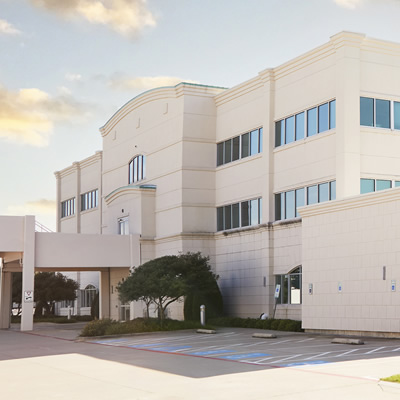¿Qué es el cáncer de mama?
El cáncer de mama comienza cuando las células de la mama crecen de forma anormal. Estas células pueden multiplicarse y extenderse a otros tejidos. Después del cáncer de piel, el cáncer de mama es el más frecuente entre las mujeres de hoy en día. De hecho, aproximadamente una de cada ocho mujeres será diagnosticada de cáncer de mama a lo largo de su vida. Aunque es poco frecuente, los hombres también pueden padecer cáncer de mama. Los hombres representan menos del 1% de todos los casos.
Tanto si desea conocer su riesgo como si está afrontando un diagnóstico de cáncer de mama, dispone de muchos recursos para la prevención, la detección, el tratamiento y la recuperación. Tiene acceso a servicios completos de varias áreas de atención de todo el sistema Baylor Scott & White, todos ellos dedicados a vencer el cáncer de mama.
Tipos de cáncer de mama
Hay muchos tipos diferentes de cáncer de mama, y el tipo de cáncer de mama que usted tenga depende de varios factores, como dónde empieza, si se ha extendido y otras características.
Normalmente, el cáncer de mama comienza en los lobulillos, que son las glándulas de la mama que producen leche, o en los conductos galactóforos. En raras ocasiones, puede desarrollar cáncer en otras zonas, como el pezón.
Los cánceres también se clasifican en función de si se han extendido a otros tejidos -cánceres invasivos- o han permanecido en la zona donde empezaron -cánceres no invasivos-.Por último, los médicos clasifican los cánceres en función de si tienen determinados receptores que pueden atraer o unirse a las hormonas que impulsan el crecimiento del cáncer. Su cáncer puede ser:
- Receptor de estrógeno (RE) positivo
- Receptor de progesterona (RP) positivo
- Hormona (HR) positiva, lo que significa que tienen receptores de estrógeno y progesterona
- Factor de crecimiento epidérmico humano tipo 2 (HER2) positivo, lo que significa que tienen la proteína HER2 que, al igual que las hormonas, puede promover el crecimiento del cáncer.
-
Angiosarcoma
El angiosarcoma de mama es un tipo raro de cáncer que suele aparecer en mujeres que reciben radiación en el pecho. Este tipo de cáncer de mama se desarrolla en las paredes de los vasos sanguíneos o en los vasos del sistema linfático.
-
Carcinoma ductal in situ (DCIS)
El CDIS es una forma común y casi siempre tratable de cáncer de mama. A veces denominado cáncer de mama en estadio 0, se desarrolla en los conductos galactóforos pero permanece "in situ", que es otro término para referirse a no invasivo. Sin embargo, el CDIS puede convertirse en invasivo si no se trata a tiempo.
-
Cáncer de mama inflamatorio (CMI)
Poco frecuente en Estados Unidos, el IBC es un tipo de carcinoma ductal invasivo que se da con más frecuencia en mujeres negras y menores de 40. Crece y se extiende más rápidamente que otros tipos de cáncer de mama y, en aproximadamente 30% de los casos, se ha extendido fuera de la mama. A menudo provoca una erupción, una textura inusual, hinchazón o enrojecimiento en el pecho.
-
Carcinoma ductal invasivo (CDI)
El CDI es el tipo más común de cáncer de mama y se da en aproximadamente el 80% de las mujeres diagnosticadas de cáncer de mama. Comienza en los conductos galactóforos y luego se extiende a otras zonas de la mama.
-
Carcinoma lobulillar invasivo (CLI)
El CIL es el segundo tipo más común de cáncer de mama y se da en aproximadamente el 10% de los casos. Comienza en los lobulillos, o glándulas que producen leche, y se extiende a otras partes del cuerpo. La ILC puede darse en ambas mamas.
-
Cáncer de mama masculino
Cáncer de mama masculino is a rare condition that occurs when cancerous cells form in the breast tissue of men. Though commonly associated with women, anyone with breast tissue can develop breast cancer. It is most common in older men but can happen at any age. Treatment often involves surgery to remove the breast tissue and other options like chemotherapy or radiation may be recommended.
-
Enfermedad de Paget
En la enfermedad de Paget, las células cancerosas se forman alrededor o en su pezón, o en la piel que lo rodea (la areola). A menudo provoca enrojecimiento, escamas y una secreción inusual del pezón. La enfermedad de Paget, una forma rara de cáncer de mama, suele desarrollarse junto con otro tipo de cáncer de mama, como el CDIS o el CDI.
-
Cáncer de mama triple negativo (TNBC)
Un tipo de cáncer de mama invasivo, el TNBC recibe su nombre del hecho de que es negativo para los tres receptores proteínicos que provocan el crecimiento del cáncer de mama: estrógeno, progesterona y HER2. Es agresiva y difícil de tratar. El TNBC se da con más frecuencia en mujeres jóvenes, mujeres negras y mujeres con mutaciones en el gen BRCA1.
Síntomas del cáncer de mama
Uno de los principales signos del cáncer de mama es un bulto, que puede aparecer en el pecho o en la axila. Sin embargo, los bultos no siempre aparecen con todos los tipos de cáncer de mama. Cuando aparecen o son lo suficientemente grandes como para palparse, el cáncer puede estar avanzado o crecer con rapidez.
El cáncer de mama en fase inicial no siempre provoca síntomas. Aun así, es importante saber qué buscar para poder identificar los cambios en sus mamas durante los autoexámenes mensuales.
In addition to breast lumps, signs and Síntomas del cáncer de mama include:
- Un pezón que tira o gira hacia dentro
- Cambios en el tamaño o la forma de su seno
- Discharge from the nipple that is not breast milk
- Pain in your breast or nipple
- Cambios en la piel de la mama o alrededor del pezón, como hoyuelos, arrugas, irritación, enrojecimiento, sequedad o descamación.
- Hinchazón o engrosamiento en el pecho o la axila
Cuando consultar con su médico
Acuda a su médico lo antes posible siempre que note signos o síntomas preocupantes en sus mamas. Muchas afecciones pueden causar síntomas similares, y su proveedor puede ayudarle a determinar la causa y el tratamiento adecuado.
You can stay on top of your health with monthly breast self-exams. These let you get to know the normal texture and feel of your breasts, which can help you identify changes sooner.
¿Qué causa el cáncer de mama?
El cáncer de mama está causado por células mamarias que crecen sin control. Los expertos médicos no saben exactamente por qué las células mamarias crecen de forma descontrolada en algunas mujeres, pero puede ocurrir debido a las hormonas o a cambios en sus genes que herede de sus padres o que se desarrollen a lo largo de su vida. Los genes controlan la forma en que sus células crecen, se dividen y reparan los problemas en el ADN que pueden provocar cáncer.
Researchers have identified many genetic changes that can increase your risk of developing breast cancer, including changes in BRCA1 and BRCA2, two genes commonly associated with the disease. However, many gene changes that cause breast cancer develop after you are born and are not well understood.
Factores de riesgo del cáncer de mama
Conocer su riesgo de padecer cáncer de mama le permite tomar medidas proactivas para cuidar de su salud mamaria. Algunos factores de riesgo del cáncer de mama están bajo su control, y los cambios saludables pueden reducir su riesgo. Otras no lo son, pero las revisiones periódicas pueden ayudarle a identificar el cáncer a tiempo, cuando es más fácil tratarlo.
-
Factores de riesgo que puedes cambiar
Las investigaciones han demostrado que las mujeres con estilos de vida saludables tienen tasas más bajas de cáncer de mama y pueden reducir su riesgo incluso si tiene antecedentes familiares de la enfermedad.
- Alcohol intake: Alcohol produces harmful substances as it breaks down in your body, affects how you absorb vitamins and increases estrogen levels, all of which may increase breast cancer risk.
- Excess weight: Being overweight or obese may raise your breast cancer risk for many reasons. Fat tissue may produce estrogen and other hormones, obesity is linked to inflammation, and excess weight often occurs with high insulin levels, which also increases cancer risk.
- No hacer suficiente actividad física: Exercise helps you maintain a healthy weight, and it may lower inflammation and hormone levels that are linked to breast cancer.
- Pregnancy and breastfeeding history: Having children before age 30 and having multiple pregnancies appears to slightly reduce breast cancer risk. Breastfeeding also appears to reduce a woman’s exposure to hormones, which may help prevent breast cancer.
- Tobacco use: You can be exposed to chemicals in tobacco smoke through smoking or secondhand smoke. Increasing research has shown that these chemicals may increase breast cancer risk.
- Usar ciertos tipos de anticonceptivos o terapia hormonal: Hormone-based birth control methods and hormone replacement therapy for menopause often contain estrogen and progesterone, which have been found to increase breast cancer risk. Their impact on risk depends on how long you use them and other factors.
-
Factores de riesgo que no puedes cambiar
Usted no siempre tiene el control sobre su riesgo de padecer cáncer de mama. Algunos factores que no puede cambiar son
- Age: Many breast cancers develop after age 50.
- Certain gene mutations: Mutations, or changes, in your genes can cause cancer cells to grow. Many gene mutations have been linked to breast cancer, but the most common are changes to the BRAC1 and BRAC2 genes.
- Dense breast tissue: Women with dense breasts appear to have an increased breast cancer risk, although the reasons are unknown. Dense breasts can also make it harder to see breast cancer or abnormalities on a mammogram.
- Ethnicity: In general, non-Hispanic white and Black women have a higher breast cancer risk. Black women are at increased risk of developing triple negative breast cancer and breast cancer before age 40.
- Family history: Most breast cancers occur in women who do not have a family history, but having one or more first-degree relatives—mother, sister, daughter, father or brother—with breast cancer increases your risk. This could be due to genetic mutations you inherit.
- History of certain medical treatments: Cancer treatment with radiation therapy to the chest can increase your risk, as can a medication called diethylstilbestrol (DES) used to prevent miscarriage until the early 1970s. If you took DES or your mother did, you may have a higher breast cancer risk.
- Personal health history: Having breast cancer in one breast, especially at a younger age, may increase your risk of developing it in the other breast. Having certain noncancerous breast conditions may also increase your risk.
- Sex: Women and men can get breast cancer, but being female or assigned female at birth puts you at greater risk.
- Your menstrual history: You may be at higher risk if you had your first period before age 12 or started menopause after 55, due to a longer lifetime exposure to hormones.
Diagnóstico del cáncer de mama
Los médicos suelen diagnosticar el cáncer de mama mediante pruebas de imagen. Si tiene síntomas preocupantes, una prueba de imagen puede ayudar a determinar qué podría estar causando los síntomas. Su proveedor también puede solicitar otra prueba de imagen si la mamografía de cribado detecta una mancha o anomalía sospechosa.
En función de los resultados de la prueba de imagen, es posible que necesite un procedimiento llamado biopsia para confirmar el diagnóstico.
-
Historial médico y examen
Historial médico y examen
Your OBGYN or women’s health provider may perform a clinical Exámen de senos during your annual well-woman exam.
Los exámenes clínicos de las mamas no suelen utilizarse para diagnosticar el cáncer de mama. Si su proveedor sospecha que hay algo anormal, puede recomendarle una mamografía diagnóstica, una resonancia magnética de las mamas o una ecografía mamaria.
-
Pruebas de imagen y otras pruebas
Pruebas de imagen y otras pruebas
Las pruebas de imagen proporcionan a su proveedor una visión detallada del tejido mamario y, potencialmente, de las zonas circundantes. Algunas pruebas de diagnóstico por imagen se utilizan para detectar el cáncer de mama, mientras que otras pueden utilizarse para investigar un posible diagnóstico.
- Mamografía de detección: Mamografías de detección are for women who have no signs of breast cancer. A mammogram often identifies early signs of breast cancer before you develop symptoms or feel a lump.
- Mamografía de diagnóstico: You may have a Mamografía de diagnóstico if you have signs or symptoms of breast cancer or if your screening mammogram detected an abnormality.
- El ultrasonido de mama: Ultrasound uses sound waves to provide an image of a certain area of your breast. Your provider may order a El ultrasonido de mama as an additional screening tool, along with a mammogram, especially if you have dense breasts. A breast ultrasound may also be used to investigate a lump or abnormality picked up on a screening mammogram.
- RM de mama: MRI uses magnets and radio waves to produce images of your breasts. Your provider may order a RM de mama as an additional screening if you are at high risk for breast cancer or to investigate a suspicious area identified on a screening mammogram or in a clinical exam.
- Genetic testing: You may also benefit from genetic testing to determine if you have genetic mutations that increase your risk for breast cancer. Your provider can discuss whether they are appropriate for you.
-
Biopsia de mama
Biopsia de mama
If an imaging test finds something concerning, your provider may order a Biopsia de mama. These tests use imaging technology, such as an X-ray, ultrasound or MRI scan, to guide a needle into the breast. Then, a sample of tissue is taken and sent to a lab to be analyzed for the presence of cancerous cells.
Estadios del cáncer de mama
Se utilizan varias pruebas para medir el estadio de un cáncer. La estadificación depende del tamaño y el grado de un tumor, de cuánto se ha extendido y de si tiene receptores proteínicos (también llamados biomarcadores). El estadio de su cáncer ayudará a determinar su tratamiento.
En general, el cáncer de mama se estadifica de 0 a IV. El cáncer en estadio 0 es el estadio más bajo. Estos cánceres no son invasivos y suelen denominarse "carcinoma in situ". Los cánceres en estadio IV son la forma más avanzada de la enfermedad y suelen denominarse cáncer de mama metastásico, lo que significa que se ha extendido fuera de la mama, a los huesos, los pulmones, el hígado o el cerebro.
Tratamiento del cáncer de mama
Tratamiento de cáncer de seno could include surgery, radiation therapy or medications. Your breast cancer care team will work with you to develop a treatment plan based on the stage and type of your condition. Your team can also help you weigh the pros and cons of each treatment, so you can choose the options that work best for your long-term health and life goals and understand what type of follow-up care you may need after treatment.
-
Surgery
Surgery
La mayoría de las mujeres se someten a algún tipo de cirugía para tratar el cáncer de mama. El tipo de cirugía que necesite dependerá de su diagnóstico.
- Tumorectomía: A Tumorectomía, also called breast-conserving surgery, allows your breast surgeon to remove a tumor and, in some cases, surrounding tissue and lymph nodes but leave most of the breast intact. You may have radiation therapy or another treatment after a lumpectomy.
- Mastectomía: During a Mastectomía, your breast surgeon removes one or both breasts. In some cases, nearby lymph nodes are also removed. Nipple- and skin-sparing mastectomies leave the nipple or skin behind so you can have breast reconstruction surgery.
- Breast reconstruction: Breast reconstruction may be an option after a mastectomy or lumpectomy. Discussing your options for reconstruction with your breast surgeon before having surgery to treat the cancer helps you decide which type of surgery you may want or need.
-
Quimioterapia
Quimioterapia
Quimioterapia uses strong medicines to treat cancer, often combining several types. Most are given through a vein, though some are in pill form. For breast cancer, chemotherapy is commonly used after surgery to eliminate any remaining cancer cells and lower the risk of recurrence. Sometimes, it's given before surgery to shrink the cancer and make it easier to remove or control cancer in the lymph nodes. This approach can reduce the need for extensive surgery. In advanced cancer, chemotherapy can help manage symptoms like pain.
-
Terapia hormonal
Terapia hormonal
La terapia hormonal trata determinados cánceres de mama bloqueando las hormonas estrógeno y progesterona, que alimentan el crecimiento del cáncer. Se utiliza en cánceres con receptores de estrógeno o progesterona positivos. Al bloquear estas hormonas, las células cancerosas pueden reducirse o morir. La terapia hormonal suele administrarse después de la cirugía para reducir el riesgo de que el cáncer reaparezca, y también puede ayudar a controlar el cáncer que se ha extendido. Los tratamientos incluyen medicamentos que bloquean las hormonas, evitan la producción de estrógenos tras la menopausia o impiden que los ovarios produzcan hormonas.
-
Inmunoterapia
Inmunoterapia
Inmunoterapia uses medicine to help the immune system fight cancer by making it easier to find and destroy cancer cells. It may be an option for treating triple-negative breast cancer, a type that lacks receptors for estrogen, progesterone and HER2.
-
Terapia dirigida
Terapia dirigida
La terapia dirigida utiliza medicamentos que atacan sustancias químicas específicas de las células cancerosas, provocando su muerte. En el caso del cáncer de mama, la terapia dirigida más común se centra en la proteína HER2, que algunas células cancerosas producen en exceso. Estos tratamientos se dirigen a las células cancerosas sin dañar las sanas. Existen otras terapias dirigidas y se puede comprobar su eficacia. La terapia dirigida puede utilizarse antes de la cirugía para reducir el tamaño del cáncer, después de la cirugía para reducir la recidiva o cuando el cáncer se ha extendido a otras partes del cuerpo.
-
Terapia de radiación
Terapia de radiación
Terapia de radiación uses high-energy rays to kill cancer cells. For women with early-stage cancers, radiation therapy occurs after surgery to destroy any cancer cells left behind after the procedure. With later-stage cancers, radiation therapy may be the only treatment, or it may be used to treat cancer that has spread to other parts of the body.
Existen dos tipos utilizados para el cáncer de mama:
- External beam radiation therapy (EBRT): EBRT delivers high-energy beams from a source outside your body. It’s the most common type of radiation therapy used for breast cancer.
- Radioterapia interna: Also called Braquiterapia, this treatment uses an implant placed in the body to deliver a consistent dose of radiation.
Cómo prevenir el cáncer de mama
No siempre se puede prevenir el cáncer de mama, especialmente si tiene mutaciones genéticas u otros factores de riesgo fuera de su control. Sin embargo, puede tomar medidas para protegerse de los cánceres de mama asociados a comportamientos relacionados con el estilo de vida.
- Breastfeed if you plan to have children.
- Eat a healthy diet. Some evidence suggests that getting more fiber and eating more fruits and vegetables may lower your risk. A healthy diet will also help you stay at a healthy weight.
- Exercise regularly. The American Cancer Society recommends getting at least 150 to 300 minutes of moderate-intensity physical activity per week.
- Limit your alcohol intake. Research has shown that drinking even one drink a day can have an impact on breast cancer risk.
- Maintain a healthy weight. Aim for a body mass index of between 18.5 and 24.9. Your BMI is a measure of your height compared with your weight.
- Quit smoking. You’ll reduce your risk for breast and many other cancers.
Detección de cáncer de mama
Aunque las pruebas de detección del cáncer de mama no pueden prevenirlo, sí pueden identificarlo en sus primeras fases, cuando tiene más opciones de tratamiento.
We support recommendations that women of average risk for breast cancer begin annual screening mammograms at age 40. You may need earlier or more frequent screenings if you have factors that put you at high risk, such as a family history, a history of breast cancer or known genetic mutations.
Our high-risk breast screening program provides tools to help you understand your risk and connect with care that fits your needs.
Por qué Baylor Scott & Blanco para el cáncer de mama
Cuando nos elige para la atención de su cáncer de mama, obtiene acceso a múltiples especialistas, servicios de apoyo, ensayos clínicos, asesores de pacientes y más en todo Texas. Nuestro equipo de atención oncológica no solo trata su cáncer de mama sino que también se preocupa por usted como persona.
Desde la prevención hasta la vida después del cáncer, le guiamos a lo largo de todo su viaje y, a menudo, no tiene que desplazarse muy lejos. Con la mayor red de centros oncológicos de Texas, le ofrecemos un tratamiento avanzado del cáncer de mama y años de experiencia directamente a usted.
- Dedicated patient navigators
- Un enfoque de equipo para la atención del cáncer de mama
- Access to breast cancer research
- Ubicaciones en el norte y centro de Texas
- Cáncer de Mama support groups and resources
- Programas para mamas de alto riesgo
- Asesoramiento genetico
- Centros de recursos y boutiques
- Programa de supervivencia
Atención del cáncer de mama cerca de usted
Le ayudamos a recibir atención en un lugar que se ajuste a sus necesidades. Ofrecemos varias ubicaciones para su atención, incluidos centros especializados en cáncer de mama en el norte y centro de Texas.

Especialistas en el cuidado de los senos de Baylor Scott & White, Texas
1250 8th ave ste 650, fortworth, tx, 76104
- Lunes: 8:30 am - 4:30 pm
- Martes: 8:30 am - 4:30 pm
- Miércoles: 8:30 am - 4:30 pm
- Jueves: 8:30 am - 4:30 pm
- Viernes: 8:00 am - 1:30 pm

Baylor Scott & White Especialistas en atención mamaria de Texas (satélite)
6100 Harris Pkwy Ste 260, Fort Worth, TX, 76132
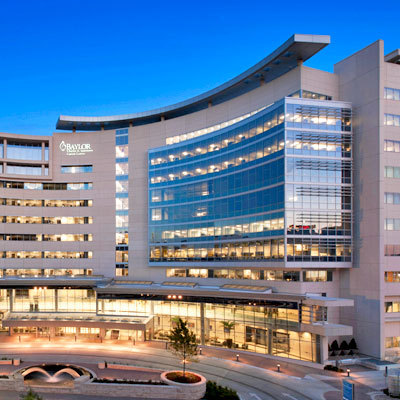
Baylor Scott & White Breast Specialists - Dallas
3410 vale la pena st ste 235, dallas, tx, 75246
- Lunes: 8:30 am - 5:00 pm
- Martes: 8:30 am - 5:00 pm
- Miércoles: 8:30 am - 5:00 pm
- Jueves: 8:30 am - 5:00 pm
- Viernes: 8:30 am - 5:00 pm
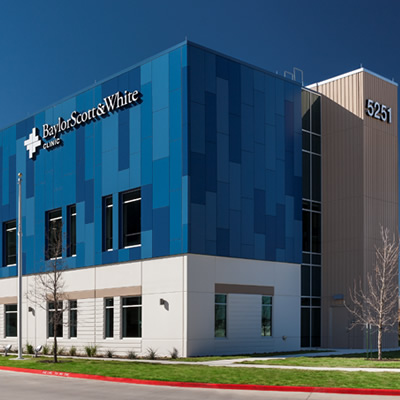
Centro de infusión y cáncer Baylor Scott & White - Austin Oak Hill
5251 US 290 Ste 100, Austin, TX, 78735
- Lunes: 8:00 am - 5:00 pm
- Martes: 8:00 am - 5:00 pm
- Miércoles: 8:00 am - 5:00 pm
- Jueves: 8:00 am - 5:00 pm
- Viernes: 8:00 am - 5:00 pm
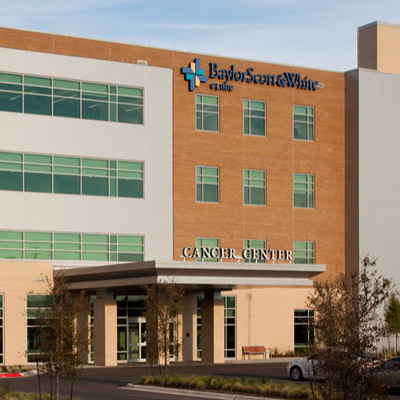
Baylor Scott y White Cancer Center - Round Rock
300A University Blvd, Round Rock, Texas, 78665
- Lunes: 8:00 am - 5:00 pm
- Martes: 8:00 am - 5:00 pm
- Miércoles: 8:00 am - 5:00 pm
- Jueves: 8:00 am - 5:00 pm
- Viernes: 8:00 am - 5:00 pm
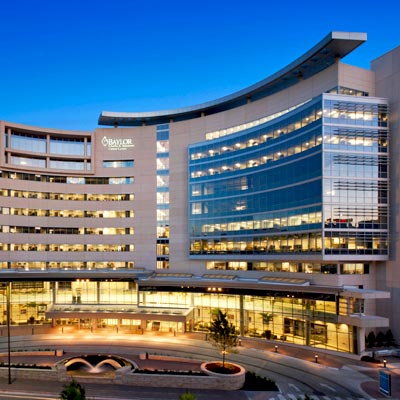
Baylor Scott y White Charles A. Sammons Cancer Center - Dallas
3410 Worth St, Dallas, Texas, 75246
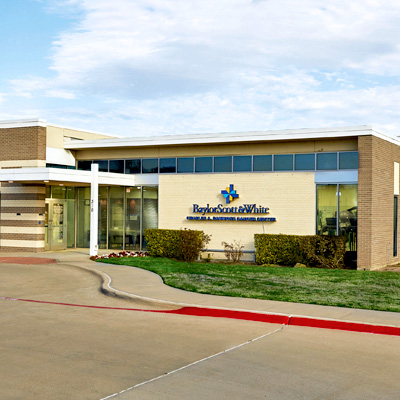
Centro Oncológico Baylor Scott & White Charles A. Sammons - Duncanville
310 E Hwy 67 Duncanville, TX, 75137
- Lunes: 8:00 am - 5:00 pm
- Martes: 8:00 am - 5:00 pm
- Miércoles: 8:00 am - 5:00 pm
- Jueves: 8:00 am - 5:00 pm
- Viernes: 8:00 am - 5:00 pm

Baylor Scott & White Charles A. Sammons Cancer Center - Irving
2001N MacArthur Blvd Ste 120, Irving, TX, 75061
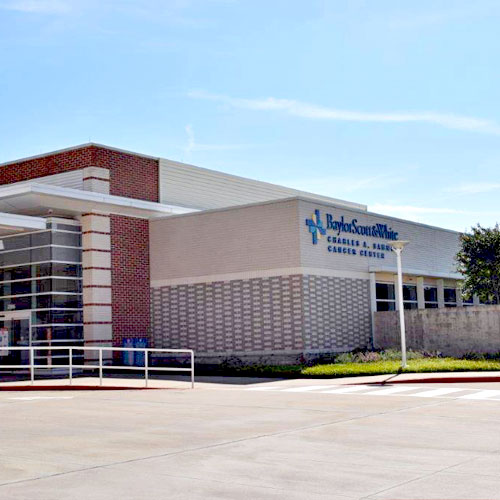
Centro Oncológico Baylor Scott & White Charles A. Sammons - Waxahachie
2380 Interestatal norte 35E , Waxahachie, TX, 75165
- Lunes: 7:30 am - 4:30 pm
- Martes: 7:30 am - 4:30 pm
- Miércoles: 7:30 am - 4:30 pm
- Jueves: 7:30 am - 4:30 pm
- Viernes: 7:30 am - 4:30 pm
- Sábado: 7:30 am - 4:30 pm
- Domingo: 7:30 am - 4:30 pm
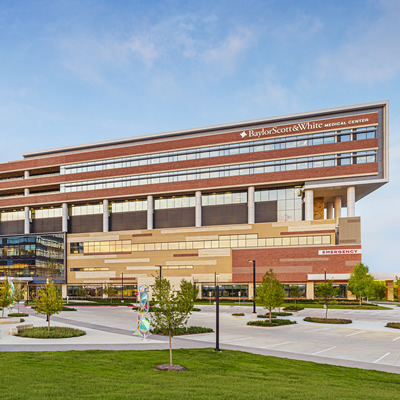
Baylor Scott & White Medical Center - Frisco en PGA Parkway
7600 Mejor Camino, Frisco, TX, 75033
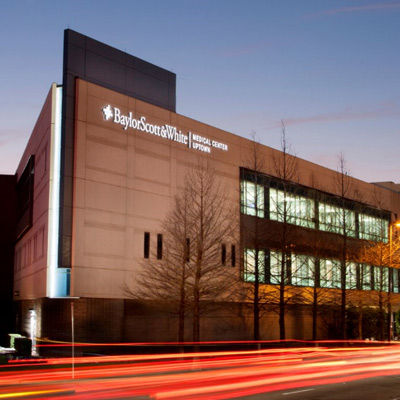
Baylor Scott & White Medical Center - Uptown
2727 E Lemmon Ave , Dallas, TX, 75204
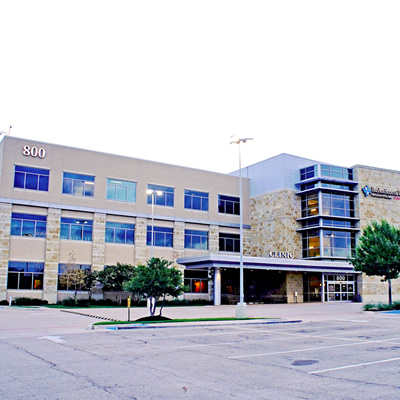
Clínica de Baylor Scott & White - Marble Falls
800 W State Hwy 71 Marble Falls, TX, 78654
- Lunes: 8:00 am - 5:30 pm
- Martes: 8:00 am - 5:30 pm
- Miércoles: 8:00 am - 5:30 pm
- Jueves: 8:00 am - 5:30 pm
- Viernes: 8:00 am - 5:30 pm
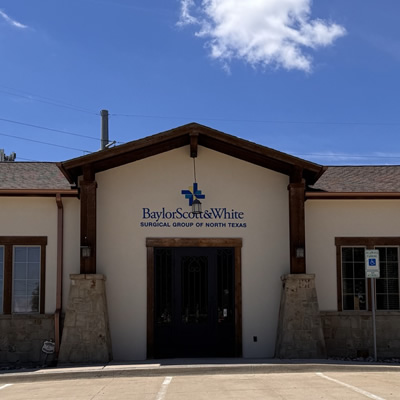
Baylor Scott & White Surgical Group del norte de Texas - Grapevine
1056 Texan Trl, Grapevine, Texas, 76051
- Lunes: 8:00 am - 5:00 pm
- Martes: 8:00 am - 5:00 pm
- Miércoles: 8:00 am - 5:00 pm
- Jueves: 8:00 am - 5:00 pm
- Viernes: 8:00 am - 4:00 pm
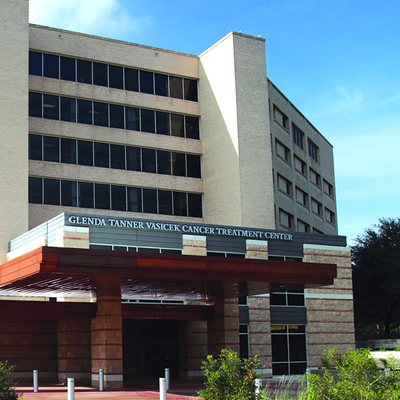
Centro de tratamiento del cáncer Baylor Scott & White Vasicek - Templo
2401 S 31st St, Temple, TX, 76508
- Lunes: 8:00 am - 5:00 pm
- Martes: 8:00 am - 5:00 pm
- Miércoles: 8:00 am - 5:00 pm
- Jueves: 8:00 am - 5:00 pm
- Viernes: 8:00 am - 5:00 pm

Centro de imágenes para mujeres Baylor Scott & White - Irving (Macarthur y Hwy 183)
2001N MacArthur Blvd Ste 250, Irving, TX, 75061
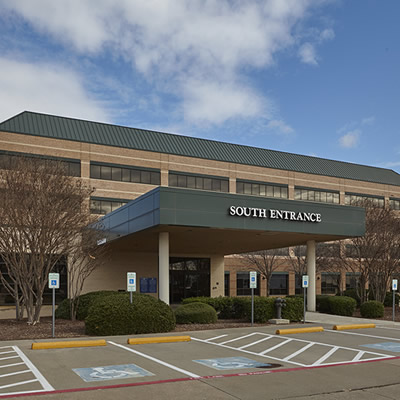
Centro de imágenes para mujeres Baylor Scott & White - Las Colinas (Macarthur & I-635)
440 Plaza II de la autopista W Lyndon B Johnson, calle 120A, Irving, TX, 75063
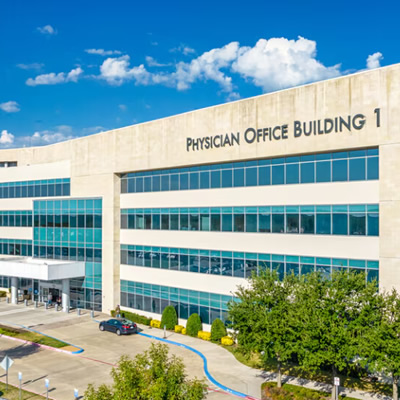
Centro de imágenes para mujeres Baylor Scott & White - McKinney
5236 w university dr ste 2500, mckinney, tx, 75071
- Lunes: 8:00 am - 4:30 pm
- Martes: 8:00 am - 4:30 pm
- Miércoles: 8:00 am - 4:30 pm
- Jueves: 8:00 am - 4:30 pm
- Viernes: 8:00 am - 4:30 pm

Centro de imágenes para mujeres Baylor Scott & White - Plano
4716 Pabellón II de Alliance Blvd, Ste 100, Plano, TX, 75093
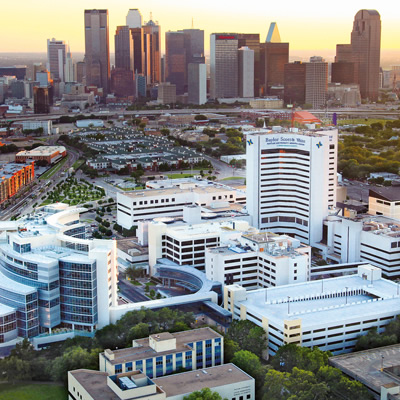
Baylor University Medical Center, parte de Baylor Scott & White Health
3500 Avenida Gastón, Dallas, TX, 75246
